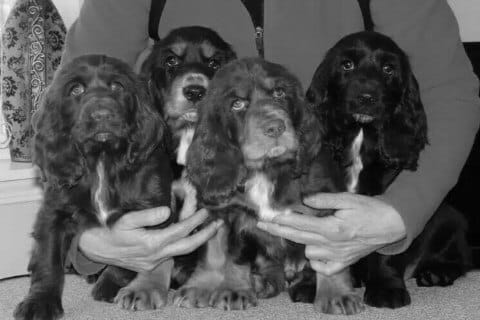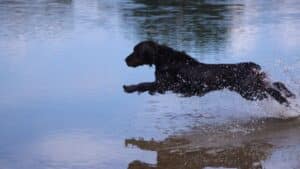
The Active, Inquisitive Spaniel
Discover the Field Spaniel: a versatile, energetic dog perfect for agility, obedience, and hunting, with a playful and loving nature.
Home » Meet The Breeds » Field Spaniel
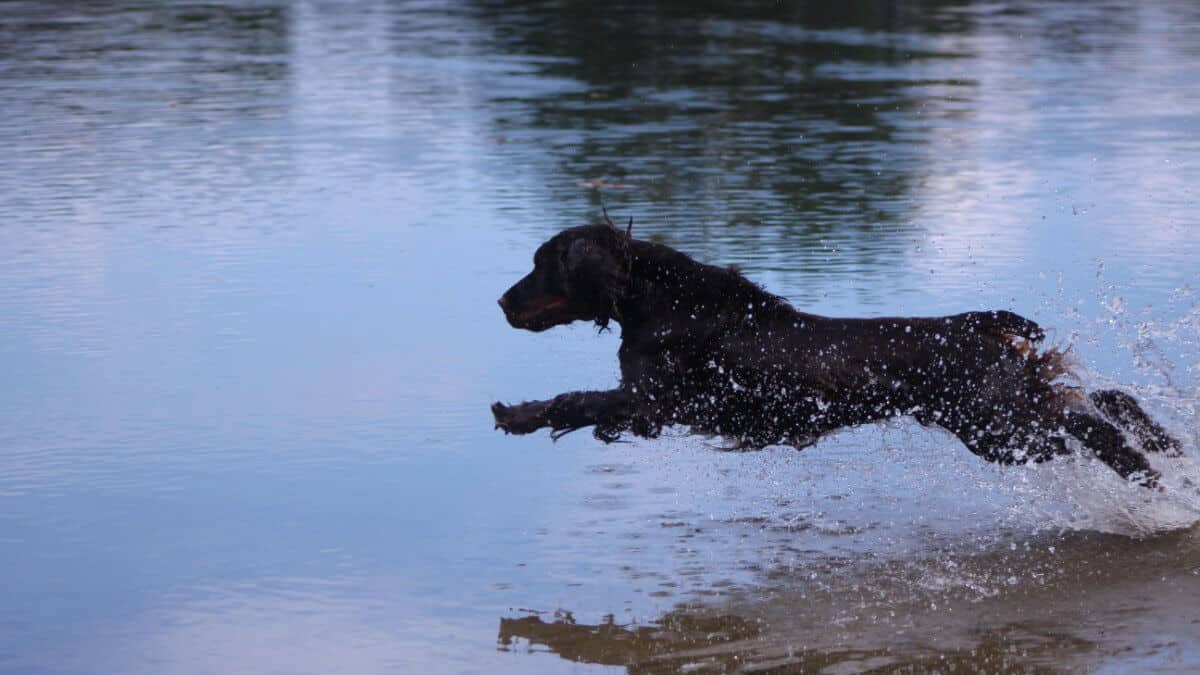
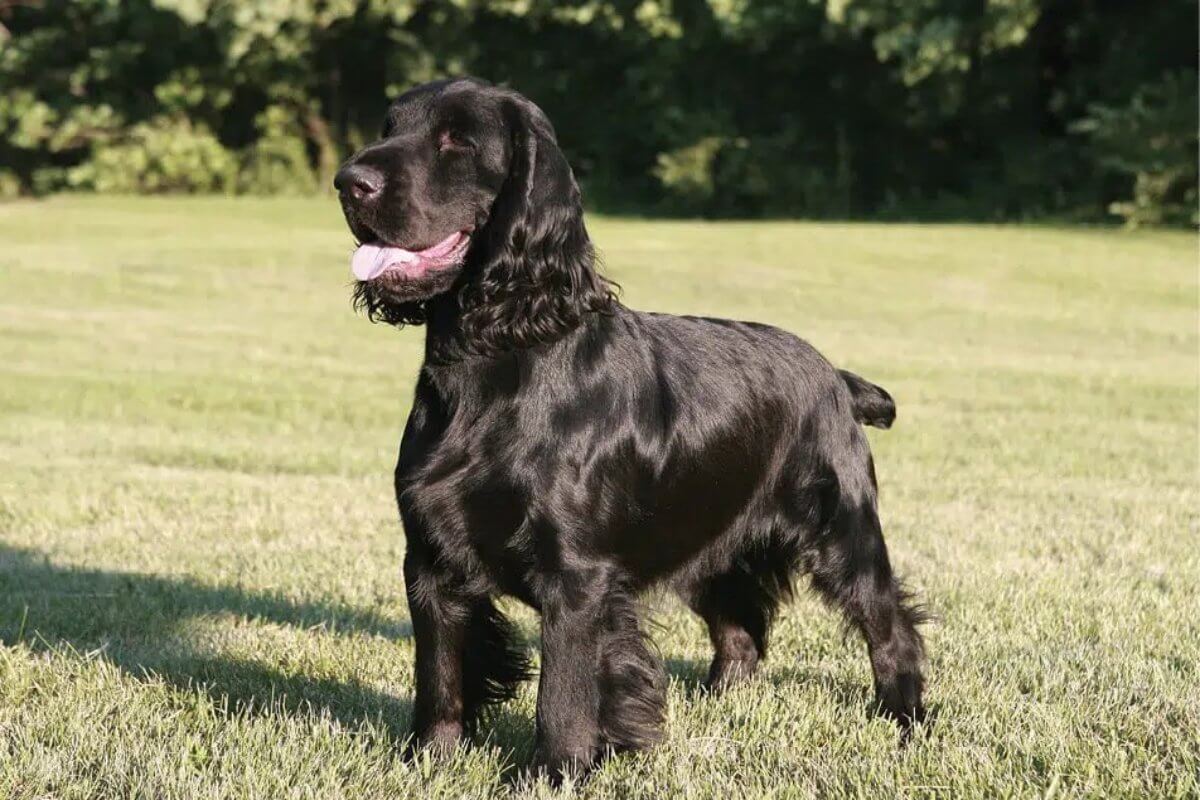
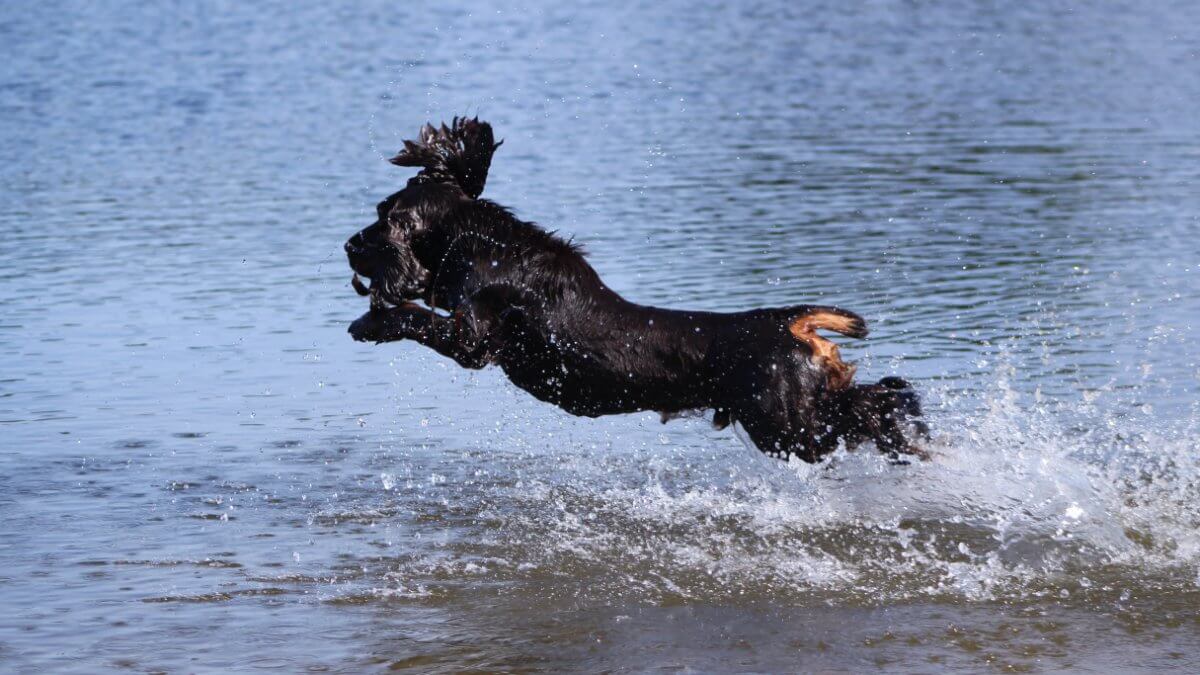
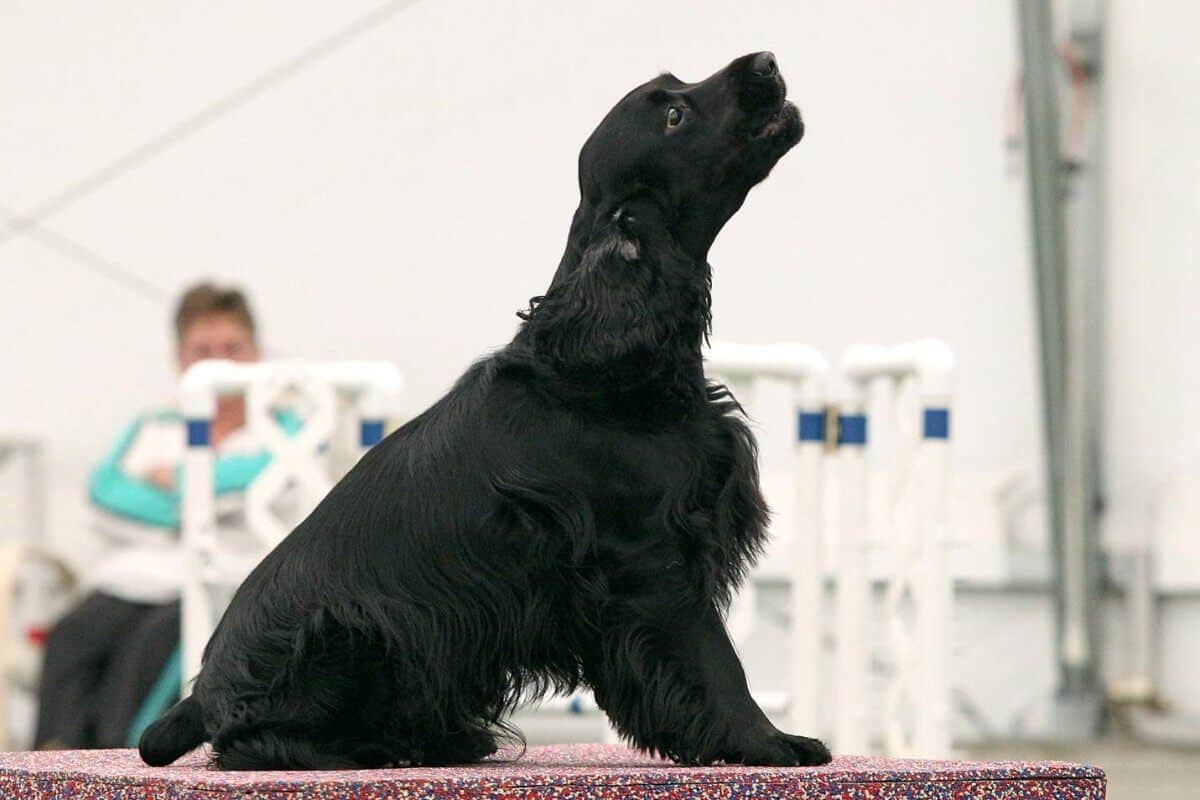
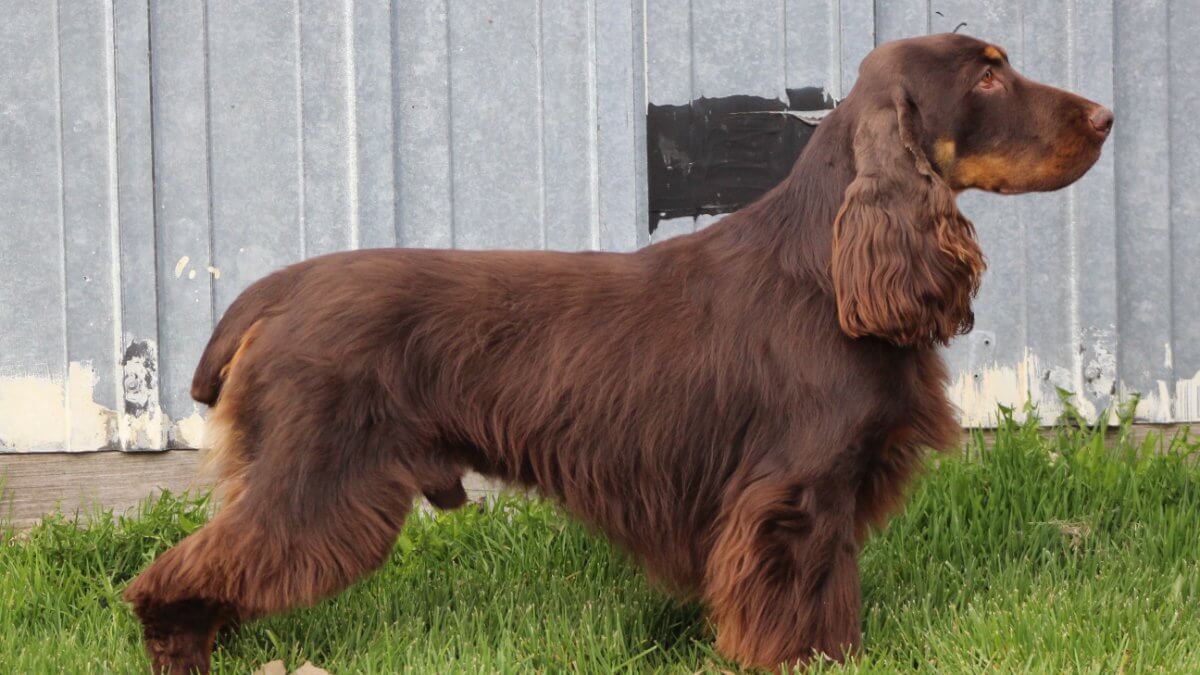
The Field Spaniel is a medium-sized breed known for its kind temperament, intelligence, and adaptability. Developed from a mix of spaniel breeds, it has excelled as both a hunter and a family companion, valued for its affectionate and patient nature with children.
Sporting
17 – 18 inches
35 – 50 pounds
12 – 13 years
| Country of Origin | England |
|---|---|
| Bred For | Flushing Birds, Companionship |
| Known For | Affection, Friendliness, Grave |
| Popularity | Low |
| Temperament | Fun-Loving, Intelligent, Sensitive |
| Activities | Hunting, Swimming, Hiking, Conformation Shows, Dog Sports |
Developed in England during the mid-19th century, Field Spaniels are versatile dogs admired for their hunting skills and companionship. Initially classified by size rather than breed, spaniels weighing more than 25 pounds were designated as Field Spaniels, while smaller dogs were called Cocker Spaniels.
The late 19th century saw a surge in the breed’s popularity, but excessive “fancy” breeding led to exaggerated features—longer bodies, shorter legs, and heavy coats—that hindered their functionality. This decline in practicality caused a sharp drop in popularity among hunters and the general public.
By the early 20th century, the Field Spaniel faced extinction. Mortimer Smith encouraged enthusiasts in the UK and in the US to restore the breed’s athleticism and balanced proportions through crossbreeding with English Springers and Cockers. Despite these efforts, challenges persisted, with the breed nearly vanishing in America after a devastating kennel fire in 1909.
In 1967, three Field Spaniels were imported to the United States, forming the foundation of the modern American population. In the UK, the Field Spaniel Society, established in 1923, has played a pivotal role in preserving the breed and promoting its dual purpose as a capable working dog and a graceful show companion.
Mature male Field Spaniels stand around 18 inches tall at the shoulder, with females slightly smaller at about 17 inches. Field Spaniels typically weigh between 35 and 50 pounds.
Field Spaniels are medium-sized, well-balanced dogs with a slightly rectangular body shape. Their length, from shoulder to buttocks, exceeds their height at the withers in a 7:6 ratio. The breed’s solid yet refined build reflects its strength and agility, ideal for field work.
Texture: The Field Spaniel has a single coat that is moderately long, flat, or slightly wavy. It is dense and water-repellant, offering protection in the field and in the water. The coat is glossy in appearance and silky to the touch, with feather-like furnishings of moderate length.
| Standard Color | |
|---|---|
| Black | y |
| Liver | y |
| Blue Roan | y |
| Golden Liver | y |
| Liver Roan | y |
| Golden Liver Roan | y |
| Black & Tan | n |
| Liver & Tan | n |
| Liver & White | n |
| Black & White | n |
| Standard Marking | |
|---|---|
| Tan Markings | y |
A Note About Color: The Field Spaniel’s coat is as useful as it is beautiful. It is silky in texture, dense, and water-resistant. The chest, belly, second thigh, and back of the legs are nicely feathered with long hair, as is a naturally long tail. The head, face, throat, and top of the ears are typically trimmed as are the feet and tail. The coat of this spaniel is especially colorful, appearing in solid black or liver, black or liver roan, and black or liver with white. Bi-colored dogs must include areas of white with black or liver ticking. Tan markings can appear over the eyes and on the muzzle, cheeks, throat, underside of the ears, chest, feet, and the underside of the tail. White patches are acceptable on the throat and/or chest, and these may be clear white, roaned, or ticked.
The Field Spaniel’s tail is an extension of the gently rounded croup, carried horizontally and never above the back. It may be natural or docked, usually by one-third. The tail is well-feathered with silky, fine hair and is typically trimmed for neatness.
Field Spaniels are loyal, active companions well-suited for families that enjoy outdoor activities. They excel in canine sports and are affectionate and patient with children. They are typically reserved with strangers but never aggressive. Their playful nature requires consistent engagement and training.
Field Spaniels are generally healthy, with an average lifespan of 12–13 years. Responsible breeding, regular veterinary check-ups, and a balanced diet help to minimize health issues and promote longevity.
Although generally a healthy breed, individual dogs may be prone to certain health conditions, including:
Field Spaniels are gentle and affectionate dogs, known for their calm and friendly demeanor. They display an eagerness to please and are well-suited for novice owners. They respond best to encouragement and positive reinforcement.
These dogs are patient and form strong bonds with their families, making them excellent companions for children. They get along well with other pets and are approachable and sociable without being overly assertive, quickly warming up to strangers.
Field Spaniels enjoy spending time with their human companions and thrive on interaction. While they can handle short periods alone, extended isolation often leads to boredom or anxiety, making the breed best suited for homes where they can be active participants in daily life.
Field Spaniels require a well-balanced diet to support their active lifestyle and overall health. To meet their nutritional needs, puppies benefit from high-quality puppy food, divided into smaller, frequent meals during the first few months of life.
Adult Field Spaniels thrive on two meals per day, with portions tailored to their size, age, and activity level To avoid overfeeding and obesity, they need 1.5 to 2 cups of high-quality dry food daily, but this will vary depending on a dog’s individual metabolism and exercise routines.
Field Spaniels are intelligent and eager to learn, which makes training a rewarding experience for both dog and owner. The breed’s natural willingness to please allows these dogs to respond well to positive reinforcement techniques, including treats and praise.
These sensitive dogs require a gentle and patient approach, as harsh corrections can undermine their confidence. Early training and socialization are essential to shape their behavior. This includes mastering basic commands and ensuring they feel comfortable in various environments.
While not excessive barkers, Field Spaniels may alert their owners to unfamiliar sounds or visitors. Their natural hunting instincts make recall training and secure outdoor spaces a priority.
Field Spaniels are active and energetic dogs that require daily exercise to maintain their physical and mental health. They thrive on activities such as long walks, hikes, or interactive games that engage both their bodies and minds.
| Energy Level | High |
|---|---|
| Exercise Requirements | 2 Hours/Day (Minimum), Daily Walks, Vigorous Running, Regular Exercise, Occasional Swimming, Playing with Another Dog, Mental Stimulation |
At least an hour of exercise per day is recommended to prevent boredom and associated behaviors like restlessness or chewing. Regular outdoor adventures, including opportunities to explore and follow scents, satisfy their natural curiosity and hunting instincts.
Despite their high energy levels, Field Spaniels enjoy relaxing with their families. These well-balanced companions benefit from a consistent exercise routine that keeps them happy, healthy, and well-adjusted.
The Field Spaniel’s beautiful coat requires regular care to maintain its silky texture and glossy appearance. Weekly brushing prevents tangles and distributes the skin’s natural oils, keeping the coat healthy and manageable.
| Coat Type | Flat, Glossy, Silky, Feathered |
|---|---|
| Grooming Requirements | Weekly Brushing, Occasional Bathing, Routine Ear Cleaning, Periodic Nail Trimming, Regular Tooth Brushing |
Moderate shedding is normal, but routine grooming helps to control it. Occasional bathing with a gentle, dog-specific shampoo keeps the coat clean without stripping the natural oils.
The breed’s long, feathered ears are prone to infections, so regular cleaning is essential. Nail trimming should be done regularly to avoid overgrowth and discomfort, and will support the dog’s overall good health as well as its appearance.
Living with a Field Spaniel means embracing the breed’s affectionate and loyal nature. These dogs form deep bonds with their human companions and thrive in homes where they are included in daily activities.
They can adapt to various living arrangements, including apartments, provided their daily exercise needs are met. While they tolerate mild weather well, they may need protection in extreme heat or cold.
Field Spaniels are happiest when they have regular interaction with their people, making them ideal for individuals who can offer companionship and engage in outdoor adventures. Their gentle temperament ensures they integrate well into family life.
Field Spaniel puppies are adorable and energetic, and a delight to have around. They are typically affectionate and thrive on human companionship, requiring both patience and love from their people. As with any puppy, thoughtful care, training, and socialization will encourage individuals to become well-adjusted as adults.
Caring for a Field Spaniel puppy begins with creating a safe and nurturing environment. Puppy-proofing the home and providing a comfortable, designated space, such as a crate, helps the new family member to feel secure while aiding in housetraining.
Socialization is key during the early months of life to ensure the puppy grows up to become a well-adjusted adult. Introducing the puppy to various people, animals, and environments builds confidence and reduces the risk of fear or anxiety later in life.
A high-quality puppy food tailored to a puppy’s developmental needs, divided into smaller, frequent meals, supports rapid growth. Regular veterinary check-ups help to monitor overall health and keep the pup on track during this critical stage.
Training should start early, focusing on basic commands, leash manners, and positive reinforcement. and Supervisedplaytime provides both mental and physical stimulation, helping the puppy to burn off energy and develop a strong bond with each family member.
The Field Spaniel is recognized by the world’s leading registries and kennel organizations, which categorize the breed into a specific Group based on its unique characteristics. This breed is recognized worldwide under the following Group designations:
| Organization | Group Designation |
|---|---|
| AKC (American Kennel Club) | Sporting |
| UKC (United Kennel Club) | Gun Dog |
| CKC (Canadian Kennel Club) | Sporting Dogs |
| ANKC (Australian National Kennel Council) | Gundogs |
| RKC (The Royal Kennel Club) | Gundog |
| FCI (Fédération Cynologique Internationale) | Group 8 – Retrievers-Flushing Dogs-Water Dogs; Section 2 – Flushing Dogs |
The ideal Field Spaniel is described by a Breed Standard that is approved by each of the world’s leading registries and kennel organizations. The Breed Standards for this breed may be found in the following links:
| Organization | Breed Standard |
|---|---|
| American Kennel Club | AKC Field Spaniel Breed Standard |
| United Kennel Club | UKC Field Spaniel Breed Standard |
| Canadian Kennel Club | CKC Field Spaniel Breed Standard |
| Australian National Kennel Council | ANKC Field Spaniel Breed Standard |
| The Royal Kennel Club | RKC Field Spaniel Breed Standard |
| Fédération Cynologique Internationale | FCI Field Spaniel Breed Standard |
Field Spaniel clubs play a vital role in preserving and promoting the breed. They provide a platform for enthusiasts, breeders, and owners to share knowledge, support responsible breeding practices, and organize activities celebrating the breed and its supporters.
Field Spaniel rescue groups are dedicated to rescuing, rehabilitating, and rehoming dogs in need, offering a second chance to individuals in need that have been abandoned or surrendered.
Field Spaniels do shed, but not excessively. Regular grooming helps to keep their coat in good condition and minimizes shedding.
Field Spaniels are moderate barkers and typically bark to alert their owners of something unusual. Proper training and socialization can help to manage barking behavior.
Field Spaniels are not hypoallergenic, as they produce dander and shed. People with allergies should spend time with the breed before committing to bringing one of these dogs home.
Field Spaniels usually live 12 to 13 years, with some exceeding this range with proper care. A healthy diet, exercise, and regular veterinary check-ups promote longevity.
Yes, Field Spaniels are known for their calm and adaptable temperament. They get along well with
Children and other animals in a variety of living situations.
Field Spaniels are excellent family dogs, valued for their gentle and affectionate nature. Their patience and playfulness make them great companions for children.
Field Spaniels can make good service dogs due to their intelligence and trainability. Their suitability depends on the individual dog’s temperament and training.
Field Spaniels excel in hunting, with strong retrieving instincts and an ability to work in various terrain. They are especially skilled at hunting gamebirds.

Discover the Field Spaniel: a versatile, energetic dog perfect for agility, obedience, and hunting, with a playful and loving nature.

Master the Field Spaniel standard! Tips on judging for beauty, balance, and function in this rare, versatile hunting breed.

Explore Field Spaniels’ beauty and utility through AKC sports like Scent Work, Dock Diving, and Barn Hunt. Perfect for non-hunters!

Color, pattern, and markings are the first things you notice when you meet a Field Spaniel, but they should be the last things considered
The best way to ensure a long and happy relationship with a purebred dog is to purchase one from a responsible breeder. Not sure where to begin?
Contact the National Parent Club’s Breeder Referral Program, which is listed on the AKC Breeder Referral Contacts page.
